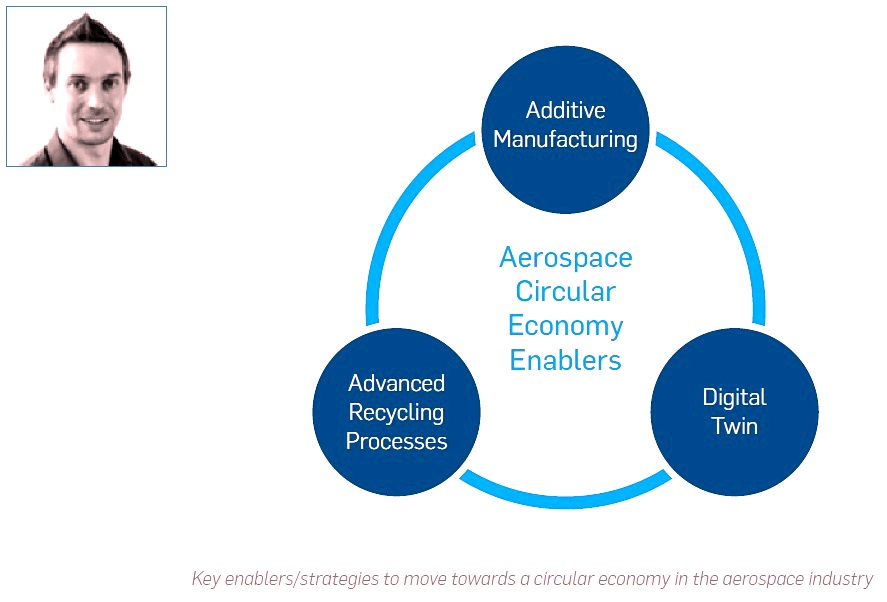Why the circular economy is taking off

Image courtesy Atkins
A quiet revolution is now underway that will radically alter how we source, manufacture and use the world’s resources. Called the circular economy, governments and businesses are recognising its potential to decarbonise global economies. So, what does this mean for the defence sector?
Fundamentally, the circular economy aims to underpin a transition towards systems that design-out waste and pollution, keep products and materials in use and regenerate natural systems. It involves seven ‘Rs’ – recycle, recover, repurpose, remanufacture, repair, refurbish and reuse. All aimed at continuing to use and reuse mineral materials extracted from the earth.
And it is taking off. The 2020 report by the Ellen MacArthur Foundation, which includes a foreword by HRH The Prince of Wales and is supported by more than 40 global banking and finance companies, provides an excellent overview of the key issues involved. It also asserts that over a period of only five years the number of private market funds with a circular economy focus have increased tenfold.
In March 2021, the new MoD climate change and sustainability strategic approach highlighted the key role that the principles of a circular economy can play in decarbonising the defence sector – as part of the overarching effort to help the UK meet its Net Zero commitment by 2050. So now is the time when we must start considering how the principles of the circular economy can apply to a military context, where all equipment and resources are mission critical.
For aerospace production, inputs are raw materials and outputs are typically either landfill waste or materials recycled into other industries but with historically very little being brought back into the aerospace production chain – and, the initial raw material extraction being one of the biggest sources of carbon emissions during production.
Shifting this process will be no small challenge but we have new and emerging technologies to help us. First, 3D printing – also known as additive manufacturing – where components are built up through an addition of material to create the end product. Where typically we create components by chipping away at raw materials, 3D printing builds in an additive not a subtractive way, laying down powder or molten material only where it is needed and even coming from recycled material, massively reducing waste in the production process.
Additive manufacturing also opens-up the increased possibility of using recycled, end-of-life components as the input material. By their nature, input materials are powder or wire. These are much better suited for creating critical structural components than those used in a typical subtractive process, because they have greater purity. So, this development too supports the case for a circular economy, as it requires fewer raw materials and less energy.
In terms of the potential application of this to a military environment, a 3D printer can be deployed remotely. So, while stock of material is required, so too is the means to recycle original components to use as the base material. This is likely to massively reduce the stock of spare parts needed to be maintained and the emissions associated with their manufacture, transport and storage.
Another tool is the digital twin: a digital, virtual representation that mirrors its real-life physical counterpart. Digital twins are already being used in transportation and infrastructure to track components through their lifespan, helping to pinpoint when a component needs to be upgraded or replaced.
A digital twin of an aircraft could, for example, provide key details on original material composition and usage and help us predict exactly what needs to be repaired, reused or refurbished and when, in an aircraft, to ensure its safety and that it meets the appropriate regulations. Hazardous materials could be tagged as such, to help minimise risk to process operators, while parts available for reuse could be identified quickly along with optimal repair, remanufacture and recycling pathways.
Remanufacturing is another key activity: using a component as the basis for a completely new component, such as wind turbine blades being trialled for use to reinforce concrete on parts of the HS2 project.
Rolls-Royce has announced its closed-loop recycling programme, Revert, which recovers, recycles and reuses waste metals in manufacturing, that can be melted and used again in new aerospace alloys. Airbus also says it dismantles its aircraft “in a manner that maximises reuse and recycling and focuses on the safe disposal of non-recyclable parts,” but, crucially, these parts tends to leave the aerospace value-chain.
Aviation – both civil and defence – is of course a safety-critical endeavour but as the civil sector takes these early steps the defence sector must, too, start its exploration of decarbonising component production. In the same way that we are exploring alternatives to fossil fuel, adopting the principles of a circular economy must surely be another powerful tool in our armoury to reaching Net Zero by 2050, a theme explored in more depth in this paper, A Circular Economy for Civil Aerospace .
James Domone is an engineer at Atkins (a member of the SNC-Lavalin Group) working within the aerospace and defence market. He has supported numerous aerospace clients throughout his career, including Airbus and Rolls-Royce, on both commercial and military platforms, working on structural and propulsion systems. James has played a leading role at Atkins in developing knowledge and capabilities around improving the sustainability or aircraft with objective of achieving Net Zero operations.











